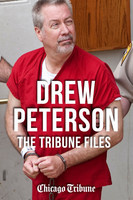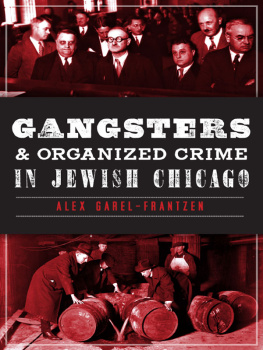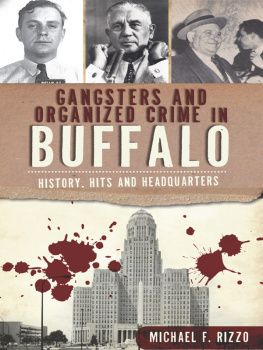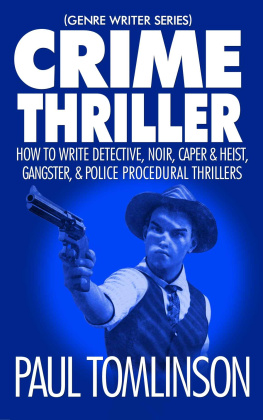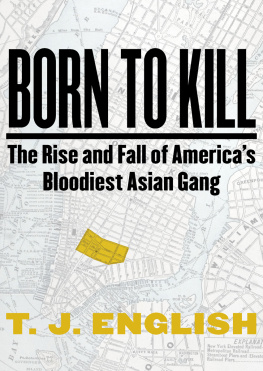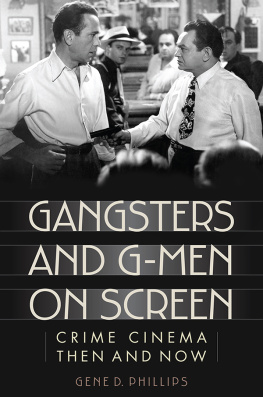


Copyright 2014 by the Chicago Tribune.
All rights reserved. No part of this book may be reproduced or transmitted in any form or by any means, electronic or mechanical, including copying, recording, or by any information storage and retrieval system, without express written permission from the publisher.
Chicago Tribune
Tony W. Hunter, Publisher
Gerould W. Kern, Editor
R. Bruce Dold, Editorial Page Editor
Bill Adee, Vice President/Digital
Jane Hirt, Managing Editor
Joycelyn Winnecke, Associate Editor
Peter Kendall, Deputy Managing Editor
Library of Congress Cataloging-in-Publication Data
Gangsters & grifters : classic crime photos from the Chicago Tribune.
pages cm
ISBN 978-1-57284-744-6 (ebook)
1. Legal photography--Illinois--Chicago. 2. Crime--Illinois--Chicago--History--20th century--Sources. 3. Crime--Illinois--Chicago--Pictorial works. 4. Criminals--Illinois--Chicago.--Pictorial works. 5. Organized crime--Illinois--Chicago.--Pictorial works. I. Chicago tribune. II. Title: Gangsters and grifters.
TR822.G36 2014
779.9364--dc23
2014027067
10 9 8 7 6 5 4 3 2 1
Midway is an imprint of Agate Publishing. Agate books are available in bulk at discount prices. For more information visit agatepublishing.com.
Contents
W ere very excited to share Gangsters & Grifters, a collection of vintage Chicago crime photographs.
Tribune photo editors have been working their way through a massive archive of 45 glass-plate and acetate negatives housed five stories under the Tribune Tower. These photos were taken between the early 1900s and the 1950s, and many have gone unseen for generations. Some of these photos, having never been published before, reveal moments witnessed only by the photographers and police.
Youll see cracks, scratches, fingerprints and dust. But weve scanned the beautiful artifacts completely as we found them, as if the person who developed them all those years ago has just stepped away from his or her desk.
Be forewarned, there are graphic crime scenes, raw evidence and depictions of searing emotion. Some photos are shocking and disturbing, captured moments after a crime. Photographers worked alongside police back then, a kind of access that just doesnt exist anymore.
Each frame is a story, a trip back in time. We hope you enjoy the trip as much as we have.
The Dames of the Chicago Tribune Photo Department
Erin Mystkowski, Marianne Mather Morgan, Robin Daughtridge

Throughout this book, actual headlines from historical Chicago Tribune articles are displayed. These headlines have not been altered in any way. All information in the captions comes from historical newspaper articles.
W e have certainly had our share, havent we?
There is no city on the planet that can boast more world-famous bad guys and bloody deeds than Chicago, and in a mildly disturbing way we relish the association. Despite the all-too-real modern city violence that annually claims hundreds of victims, many of them innocent children, tales of the past bloodshed and tears that have fallen on our streets have an eerie nostalgic glow.
Much of that is due to the glamorization of gangsters and other bad people (see The Untouchables TV series and film, as well as The Sopranos and, of more recent vintage, Boardwalk Empire). Please know we journalists are partly to blame for it. It was a former Chicago newspaperman named Ben Hecht who gave birth to this durable genre by creating what is generally regarded as the first-ever gangster film, Underworld, in 1927.
Only two years later real life gave us a St. Valentines Day bloodbath, and you will find here a photo of the carnage that took place that day at the SMC Cartage Co. The massacre started an ever-flowing stream of movies, songs and all manner of entertainments based fairly loosely on it.
On the following pages you will encounter Al Capone and John Dillinger, as famous as any gangsters have ever been. They both take over many pages here, while still alive and in the latters case quite dead. In one of the books oddest images, take note that among a crowd of people staring through glass at Dillingers corpse at the Cook County Morgue are two women named Betty and Rosella. They are wearing bathing suits.
Also impressive, images of a pair of 21-year-old taxicab bandits, both of them dressed in the fashion of bankers or lawyers and noted for using water pistols.
These pages are filled with such curiosities but also with much blood and many bodies. But even in the most gruesome photos there is a compelling intimacy to the images, as photographers lugging their huge tools got up close, perhaps even convincing the police to delay their duties while they got the shots.
There is no shot more arresting than that of Edward J. OHare, a mobbed-up lawyer who worked for and later turned on Capone, slumped bullet-ridden behind the wheel of his car after a fatal chase in 1939. He was the father of Edward Henry Butch OHare, the U.S. Navy aviator and Medal of Honor winner for whom OHare International Airport is named.
There are a few femme fatales on these pages and some others who can be considered heroes, especially the cops who can be seen doing the dirty work. There is also a fellow named Leonarde Keeler, considered the father of the polygraph, administering an early test to a suspect.
We have come a long way and live now in a CSI/Law & Order world, in which all crimes are solved in a TV hour. But the real world is and always has been a messier place, and if you want (or need) to be reminded of that, just turn the page.
Rick Kogan

Born and raised and still living in Chicago, Rick Kogan has worked for the Chicago Daily News, the Chicago Sun-Times and the Chicago Tribune, where he is now a senior writer and columnist. He was inducted into the Chicago Journalism Hall of Fame in 2003, earned an Emmy Award for his broadcast work and is the author of a dozen books.
GANGSTERS & GRIFTERS


POLICEMAN OFF DUTY IS SHOT TO DEATH BY HIS BANDIT CAPTIVE
Policeman Arthur Sullivan, 38, of the Marquette station, was shot and killed at the Kedzie Avenue station of the Douglas Park L branch near 20th Street on Jan. 14, 1937. Sullivan, off duty, was on his way home when a clerk from a nearby pharmacy pointed out a man who had robbed him the day before. Sullivan trailed the man to the L station, where he confronted him. According to the Tribune, the suspect said, Officer, Im a law abiding citizen. As Sullivan marched the man down the stairs to the middle platform, the suspect grabbed a gun from a hidden left-shoulder holster and shot Sullivan in the head. Sullivan left a widow and four children. Paroled convict Joseph Schuster, 30, was later convicted of killing Sullivan and sentenced to die by the electric chair.
Next page

